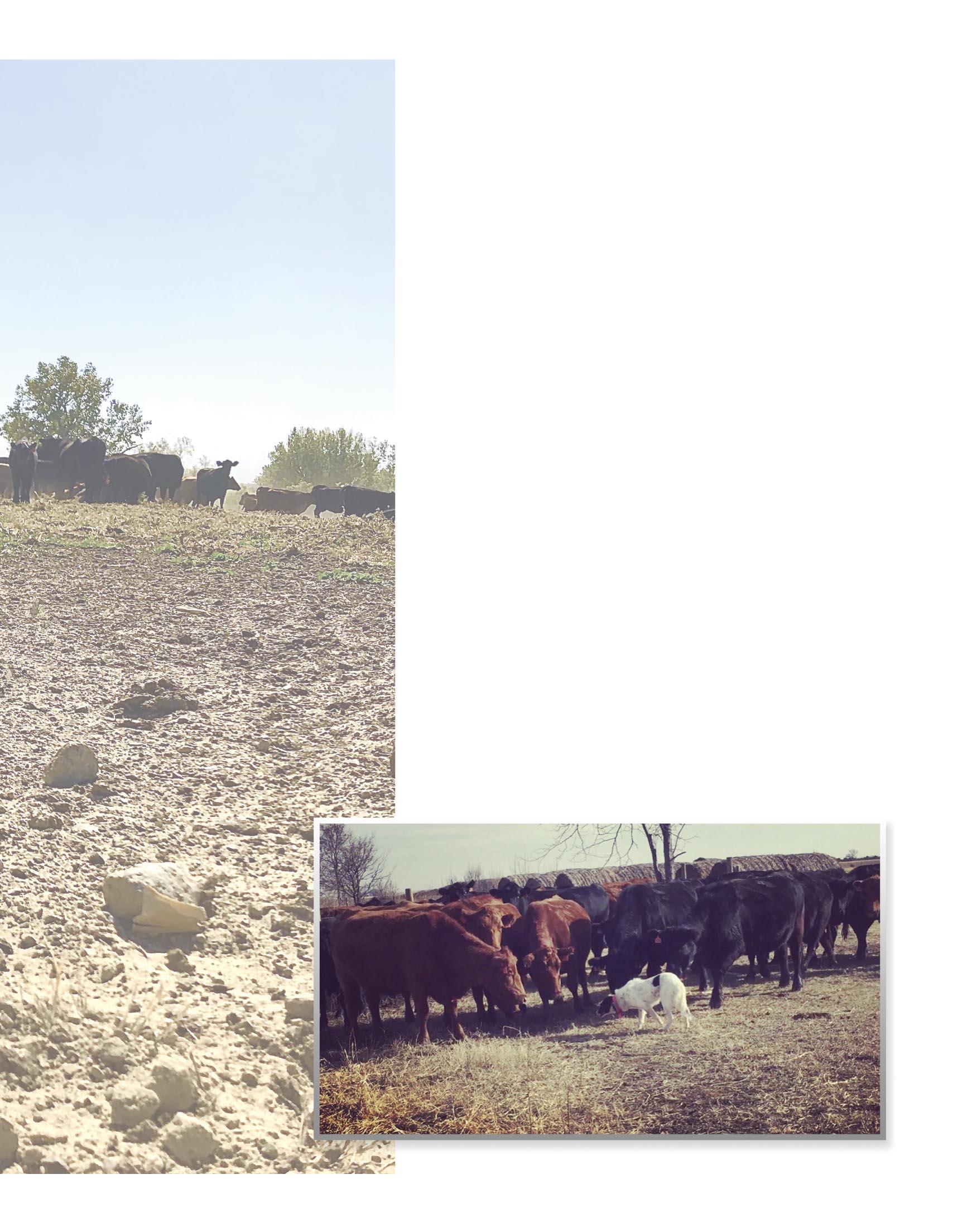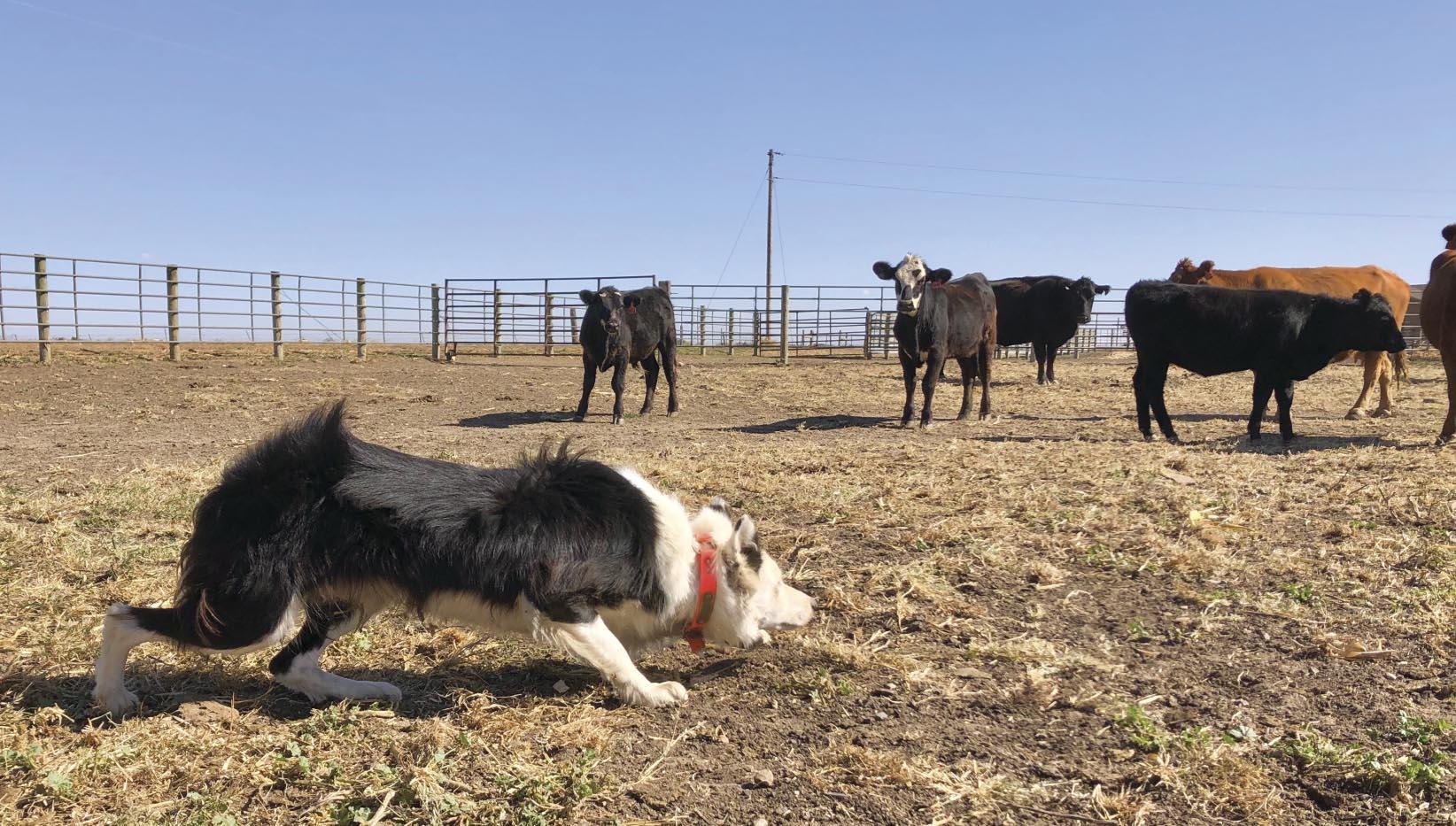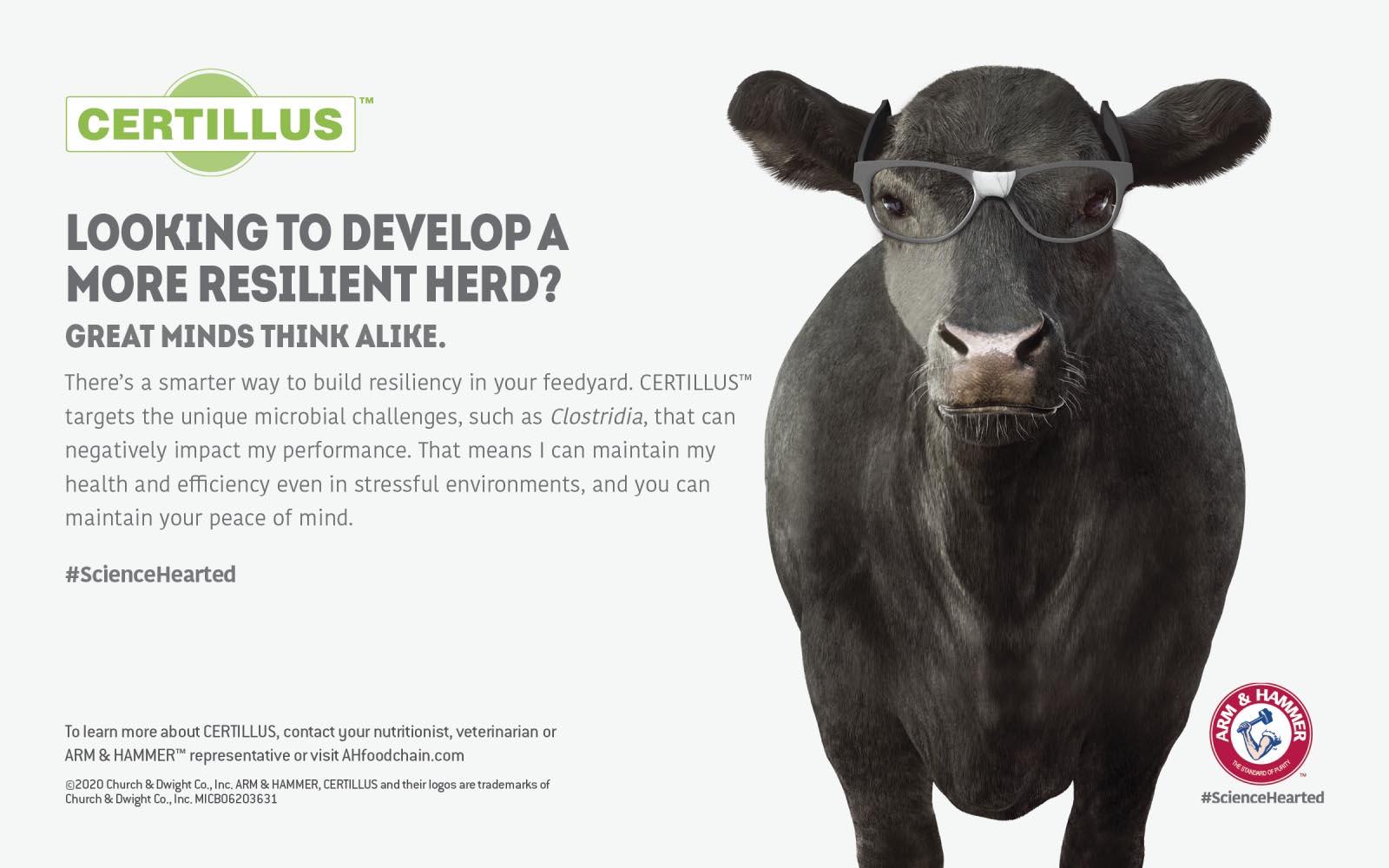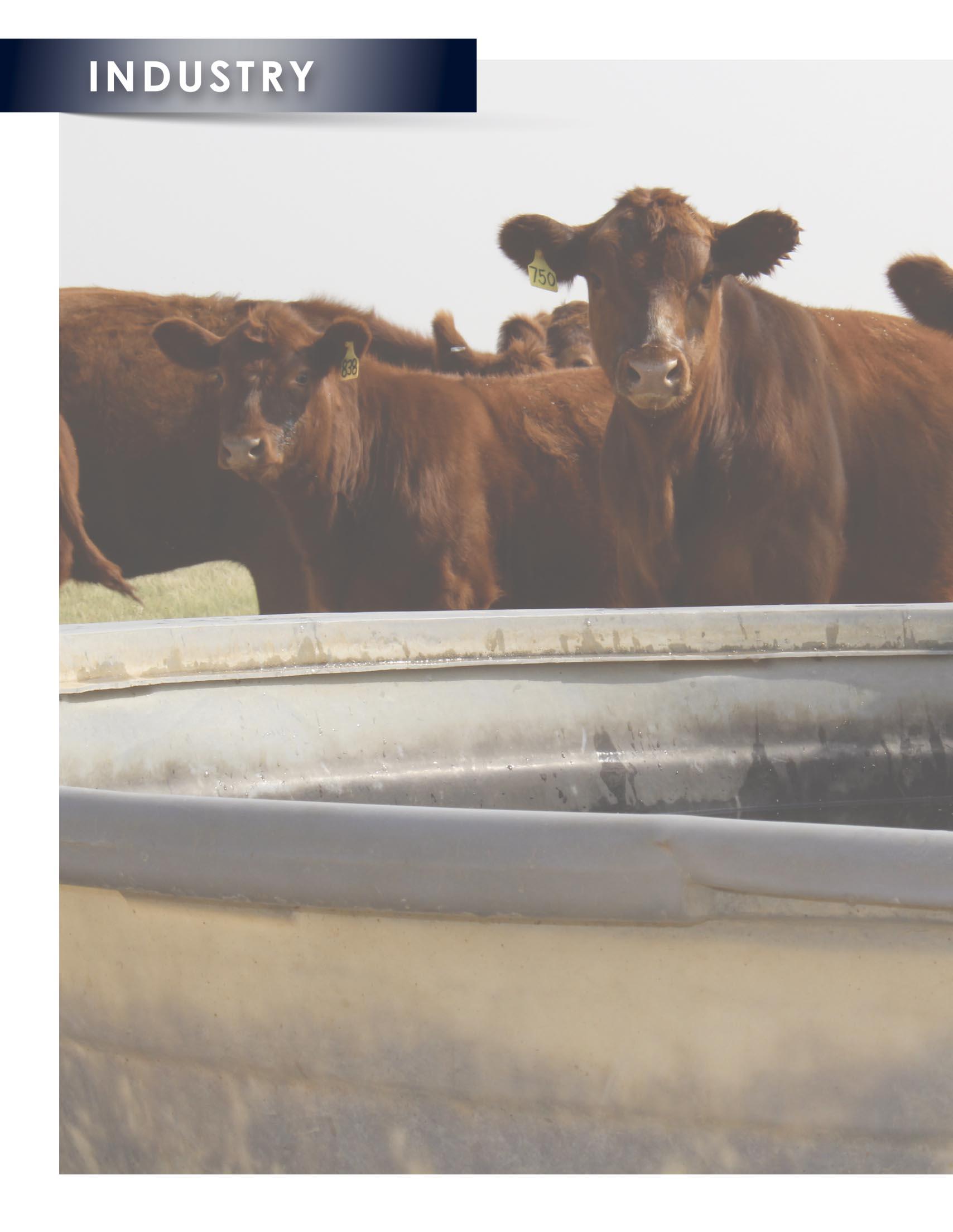
4 minute read
Squaring the Flank: The Making of a Stockdog
By Audry Wieman, DVM, Ridgeline Vet Services & Production Animal Consultation
You will find them on almost every cattle operation. They come in a variety of shapes, sizes, colors, and numbers. They can be long-haired, short-haired, floppy eared, or bob-tailed. They may stroll around the yard, lay on the other side of the fence, or bound around when you arrive. Regardless of their composition, the company dog seems to be a ubiquitous character among cattlemen.
Even to the untrained eye, a great stockdog is easy to recognize. Like any master craftsman, they refine the skills that elevate their actions to an artform. Christa Thomas of CE Stockdogs raises and trains border collies on her ranch near Menno, South Dakota. She uses her dogs daily on chores ranging from gathering on pasture to penning and sorting. “A good stockdog has presence,” she says. While it sounds like a mystical force, much like ‘the look’ that a parent can give to a demonstrative child, presence stems from a few core principles. At its foundation, presence is born of confidence. This quality allows great dogs to ‘think’ in unfamiliar or tricky situations. A good stockdog knows it can set cattle up for success by creating the opportunity to move in a particular direction. A composed dog has the ability to work cattle without causing overarousal.

Confidence is broken down into three core principles: position, posture, and patience. A dog’s position places its body in a location that directs the stock toward the desired destination. The position may bring the cattle to the handler, move them through a gate, or drive them down an alley. Posture refers to the stance a dog takes as it presents itself to the cattle. A crouched approach, a lowered tail, or an intense stare all indicate focus on the task at hand. The dog’s posture gives the cattle an inherent signal on the rate of movement. Patience may be the most elusive component, as it is with people, because it requires some relinquishment of control. Patience allows a situation to develop with understanding that the dog will be able to handle the unpredictability of the outcome. Part of learning this skill is the acceptance on the part of both the dog and the handler that there will be mistakes. Creating an environment for the dog to make mistakes without retribution allows the dog to recognize more effective actions. Not all dogs can withstand that type of pressure naturally, but every dog can be handled to develop more confidence.
Even if a company dog is not destined for working greatness, all dogs on the operation can be useful. Oftentimes, training dogs around cattle is done while people are focused on working cattle. Shaping a dog to understand expectations of its behavior around cattle is something that every owner can do. Short, intentional training sessions dedicated to the dog’s behavior can result in the dog be self-assured and create a suitable environment for cattle work.
Where does confidence start? Generally, away from stock. While many dogs show incredible instinct and drive, without guidance and fair expectations, they can develop into anything from a nuisance to a danger. The deception of a great, reliable stockdog is that they make the work look so effortless. The layers of learning necessary to develop their understanding is no different than teaching someone to read. Start with the basics: vowel and consonant sounds. Get it wrong and people wait for the right answer or make an odd face trying to figure out what you meant. Get it even partially right and people smile. If a teacher rolls their eyes when you get it wrong, then that creates a negative impact on the drive to try it again. It can make those learning timid, or angry, or impatient. So when you are trying to understand why the dog does not do what is expected, consider whether your ability to communicate is setting the dog up with confidence to seek the desired response.
“You watch the stock to see if they respond to the presence of a dog, or if they react to it,” comments Thomas. Dogs that crowd the cattle may be frustrated or positioned incorrectly. Dogs that bark are often uncertain of what they need to do to get their desired response and vocalize to move the stock around—like reshuffling the deck for a better hand. Developed stockdogs determine the workability of their cattle while they move to them. They will adopt a position that permits the cattle to acclimate in their presence. A great stockdog will have good grip, or bite, but will not rely on it. The dog does not give ground but also allows the cattle space to think. Christa’s young stud dog, Hook, effectively demonstrates this as he lets new cattle approach and focus on him but repositions himself to direct them as the group gathers to be moved.
Lack of confidence shows up in some dogs when they become reliant on their handler. Dogs that are ‘broke’ will work cattle by response to a command. Training a dog in this manner is the equivalent of “this is the way we have always done it” mentality. In addition, ‘broke’ dogs must face the flaws in a human’s ability to read the situation.
Instead of relying on the instinctive quality that a dog brings to working cattle, overtraining interferes with the dog’s vision. It impedes the dog’s ability to adapt on the fly and adjust when working new or ranker cattle. The hesitation slows the reaction time and further degrades a dog’s confidence. Developing a dog that reads cattle means that the handler must be aware of their own limitations and recognize that they may be the obstruction, not the dog’s ability.

At the heart of a topnotch stockdog is the rapport that it has with its cattle. The dog becomes the great communicator between what the handler desires and what the stock are presenting. It takes whatever scenario is presented, breaks down and assesses the current conditions, and orchestrates a solution. With the ability nature provides and the skills it has cultivated, watching a proficient working dog leaves a person wondering what we could achieve if we used all our senses to get a job done.
If you are interested in seeing more of Christa’s working dogs in action, you can find her on Facebook at CE Stockdogs or email her at cthomas.12@hotmail.com. If you have a question about stockdog training, you can contact Dr. Audry at audry.wieman@pacdvms.com.











